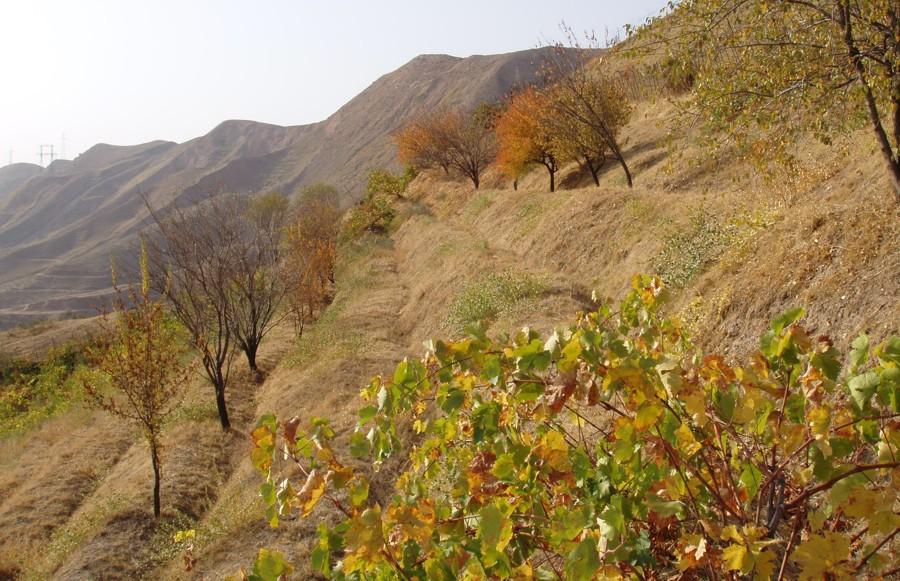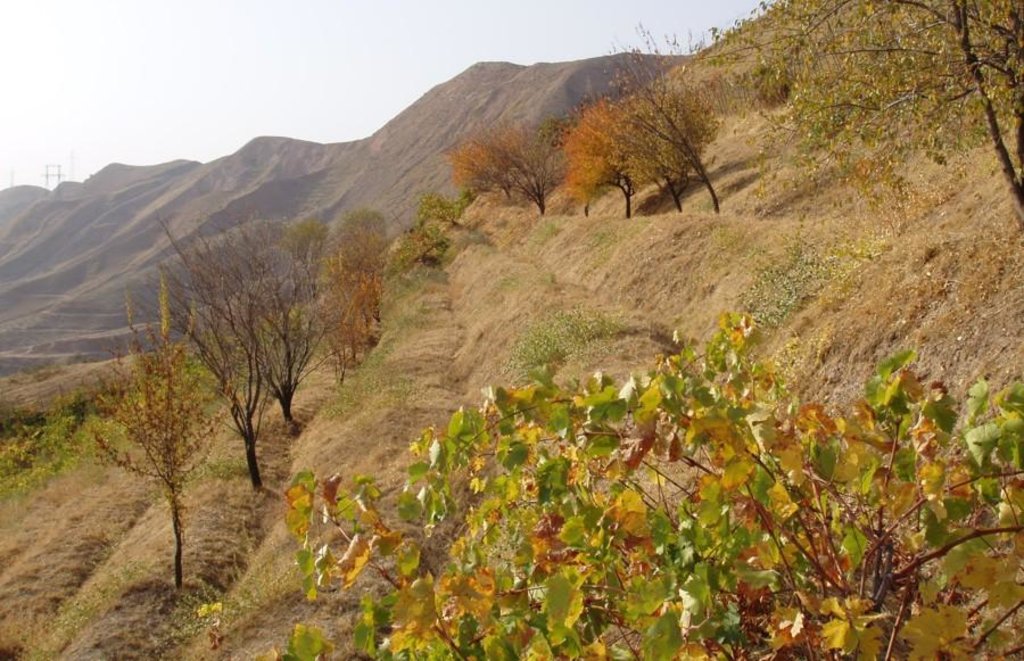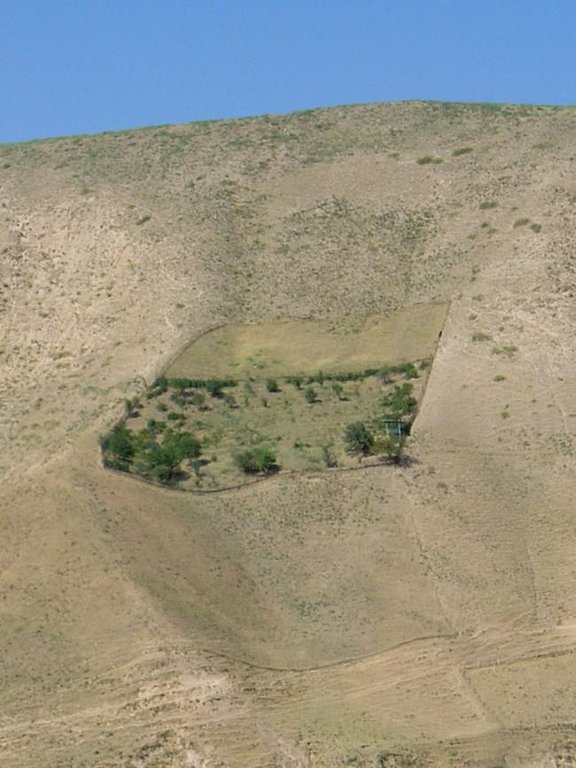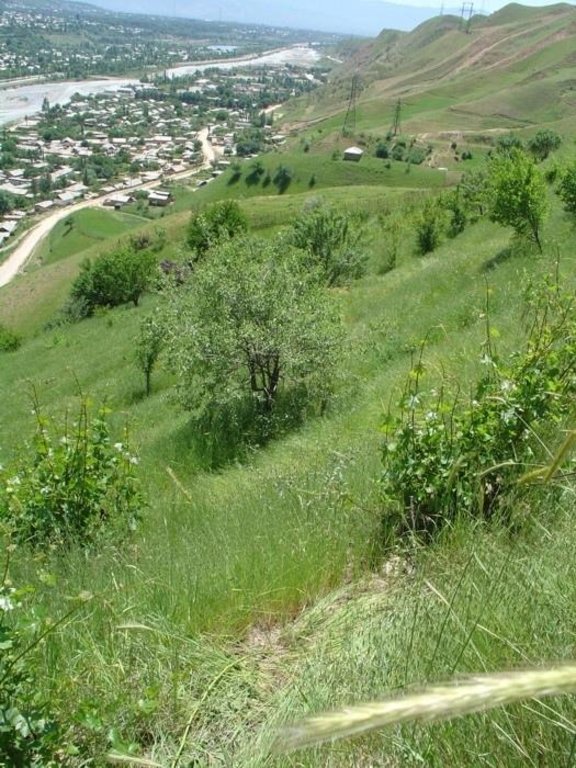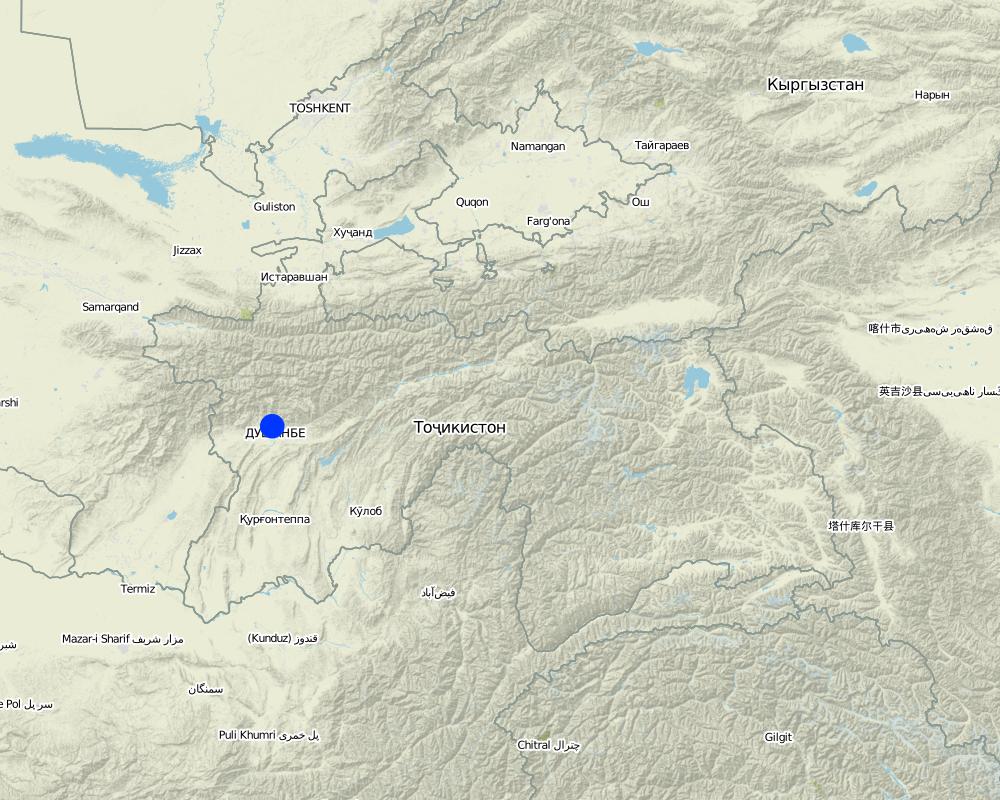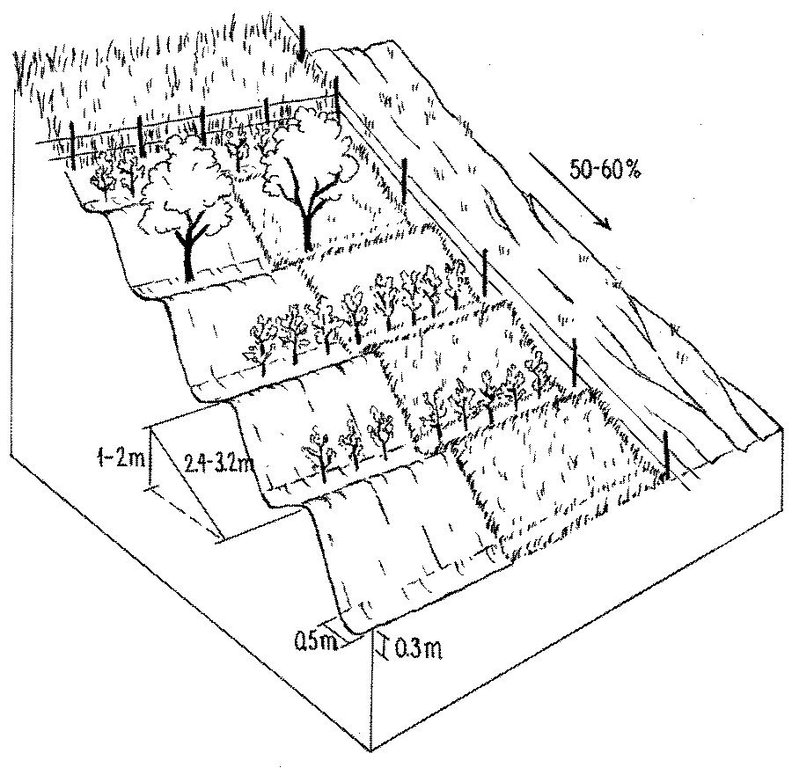Conversion of grazing land to fruit and fodder plots [Tajiquistão]
- Criação:
- Atualização:
- Compilador/a: Loes Masselink
- Editor: –
- Revisores: Alexandra Gavilano, David Streiff
technologies_977 - Tajiquistão
- Resumo completo em PDF
- Resumo completo em PDF para impressão
- Resumo completo no navegador
- Resumo completo (sem formatação)
- Conversion of grazing land to fruit and fodder plots: 20 de Agosto de 2019 (inactive)
- Conversion of grazing land to fruit and fodder plots: 2 de Novembro de 2021 (public)
- Conversion of grazing land to fruit and fodder plots: 4 de Abril de 2018 (inactive)
- Conversion of grazing land to fruit and fodder plots: 19 de Julho de 2017 (inactive)
- Conversion of grazing land to fruit and fodder plots: 17 de Julho de 2017 (inactive)
- Conversion of grazing land to fruit and fodder plots: 10 de Março de 2017 (inactive)
Veja as seções
Expandir tudo Recolher tudo1. Informação geral
1.2 Detalhes do contato das pessoas capacitadas e instituições envolvidas na avaliação e documentação da tecnologia
Especialista em GST:
Especialista em GST:
Nome da(s) instituição(ões) que facilitou(ram) a documentação/ avaliação da Tecnologia (se relevante)
Soil Science Institute (Soil Science Institute) - TajiquistãoNome da(s) instituição(ões) que facilitou(ram) a documentação/ avaliação da Tecnologia (se relevante)
CDE Centre for Development and Environment (CDE Centre for Development and Environment) - SuíçaNome da(s) instituição(ões) que facilitou(ram) a documentação/ avaliação da Tecnologia (se relevante)
NCCR North-South (NCCR North-South) - Quirguizistão1.3 Condições em relação ao uso da informação documentada através de WOCAT
Quando os dados foram compilados (no campo)?
01/06/2004
O/a compilador/a e a(s) pessoa(s) capacitada(s) aceitam as condições relativas ao uso de dados documentados através da WOCAT:
Sim
1.5 Referência ao(s) questionário(s) sobre as abordagens da GST
2. Descrição da tecnologia de GST
2.1 Descrição curta da tecnologia
Definição da tecnologia:
Fencing part of an overgrazed hillside, combined with terracing, manuring and supplementary irrigation for grape, fruit and grass production.
2.2 Descrição detalhada da tecnologia
Descrição:
In the Varzob valley of Tajikistan, slopes of around 30% are used communally, and are heavily overgrazed. This has led to a reduction in vegetation cover, to soil compaction, and to severe sheet and rill erosion. In 1982, one innovative land user began to set up half a hectare vineyard/fruit plot with intensive grass/fodder production for cut-and-carry and also a separate section above for hay making - by his own initiative. By the application of various conservation measures, within five years an area exposed to severe water erosion was converted into an area of sustainable use. Fodder and fruits are now flourishing and the natural resources of soil and water are conserved more effectively.
Purpose of the Technology: The start of the process was fencing of the plot to keep out animals. Scrap metal and other materials from a machinery depot were used to build a 1.5 m high fence. To harvest and hold runoff water from the hillside for grapes and fruit trees, narrow backsloping terraces were constructed, each with a water retention ditch along the contour. During the initial phase, the terraces did not harvest enough water for establishment of the seedlings. So water for supplementary irrigation was carried to the plot by donkeys in old inner tubes from car tyres. Manure is applied to the plot to improve soil fertility. The manure is collected on the high pastures where the herders graze their animals during summer. The total amount of manure applied to the plot so far amounts to about 3 t/ha over 20 years.
Establishment / maintenance activities and inputs: The establishment of such a plot is very demanding in terms of manpower. However within 5-6 years the system becomes self-sustaining and the productivity of the land is improved several times over. Following this positive experience, other households in the area have adopted the technology spontaneously, and today about 15 ha of degraded grazing land in the Varzob valley have been converted into productive fruit gardens.
Natural / human environment: For the innovator, his most valuable fruits are grapes, followed by apricots, almonds and plums. He has also successfully grown mulberry, pomegranate and cherry trees. Not all the seedlings survive: the farmer considers a 40% survival rate of grape vines to be reasonable. The fruit harvest is mainly used for home consumption. However, in a good year the table grapes and apricots are sold on the market. The hay harvest, from naturally regenerated grasses and fodder plants between the fruits amounts on average to 0.2 t/ha/year. The pruned branches from the vines are collected and used as firewood.
The establishment of such a plot is very demanding in terms of manpower. However within 5-6 years the system becomes self-sustaining and the productivity of the land is improved several times over. Following this positive experience, other households in the area have adopted the technology spontaneously, and today about 15 ha of degraded grazing land in the Varzob valley have been converted into productive fruit gardens.
2.3 Fotos da tecnologia
2.5 País/região/locais onde a tecnologia foi aplicada e que estão cobertos nesta avaliação
País:
Tajiquistão
Região/Estado/Província:
Tajikistan
Especificação adicional de localização:
Varzob
Map
×2.6 Data da implementação
Caso o ano exato seja desconhecido, indique a data aproximada:
- 10-50 anos atrás
2.7 Introdução da tecnologia
Especifique como a tecnologia foi introduzida:
- atráves de inovação dos usuários da terra
3. Classificação da tecnologia de GST
3.1 Principal/principais finalidade(s) da tecnologia
- Melhora a produção
- Reduz, previne, recupera a degradação do solo
3.2 Tipo(s) atualizado(s) de uso da terra onde a tecnologia foi aplicada

Misto (plantação, pastagem, árvores) inclusive agrofloresta
- Agrossilvipecuária
Principais produtos/serviços:
major food crop: grapes, apricots,almonds, plums, mulberries
other: hay (cut-and-carry)
Comentários:
Major land use problems (compiler’s opinion): - shortage of cultivable land on the gentle slopes next to the rivers
- low yield of natural pastures due to overgrazing
- heavy erosion taking place near residential areas
Major land use problems (land users’ perception): heavy erosion near the settlements
Future (final) land use (after implementation of SLM Technology): Mixed: Ma: Agro-silvopastoralism
Caso o uso da terra tenha mudado devido a implementação da tecnologia, indique seu uso anterior à implementação da tecnologia:
Grazing land: Ge: Extensive grazing land
3.3 Mais informações sobre o uso da terra
Abastecimento de água para a terra na qual a tecnologia é aplicada:
- Irrigação completa
Número de estações de cultivo por ano:
- 1
Especifique:
Longest growing period in days: 210Longest growing period from month to month: March-October
3.4 Grupo de GST ao qual pertence a tecnologia
- Agrofloresta
- Hortas familiares
3.5 Difusão da tecnologia
Comentários:
Total area covered by the SLM Technology is 0.15 m2.
3.6 Medidas de GST contendo a tecnologia

Medidas agronômicas
- A2: Matéria orgânica/fertilidade do solo

Medidas vegetativas
- V1: cobertura de árvores/arbustos

Medidas estruturais
- S1: Terraços

Medidas de gestão
- M1: Mudança no tipo de uso da terra
Comentários:
Main measures: agronomic measures, vegetative measures, structural measures, management measures
Type of agronomic measures: manure / compost / residues
3.7 Principais tipos de degradação da terra abordados pela tecnologia

Erosão do solo pela água
- Wt: Perda do solo superficial/erosão de superfície

Deteriorização física do solo
- Pc: Compactação

Degradação biológica
- Bc: redução da cobertura vegetal
Comentários:
Main type of degradation addressed: Wt: loss of topsoil / surface erosion, Pc: compaction, Bc: reduction of vegetation cover
Main causes of degradation: overgrazing
3.8 Redução, prevenção ou recuperação da degradação do solo
Especifique o objetivo da tecnologia em relação a degradação da terra:
- Recuperar/reabilitar solo severamente degradado
Comentários:
Main goals: rehabilitation / reclamation of denuded land
4. Especificações técnicas, implementação de atividades, entradas e custos
4.1 Desenho técnico da tecnologia
4.2 Especificações técnicas/ explicações do desenho técnico
The fenced-off agroforestry system comprising fruit trees and cereals grown on a steep hillside. Terracing is crucial for water conservation. Grass cover (right) is established for fodder production and simultaneous soil conservation. Note the adjacent plot for haymaking (above) and degraded rangeland outside the protected area (right).
Location: Varzob. Varzob, Tajikistan
Technical knowledge required for land users: moderate
Main technical functions: improvement of ground cover, increase in organic matter, increase in nutrient availability (supply, recycling,…), retain/trap dispersed runoff, increase in soil fertility
Secondary technical functions: reduction of slope angle, water harvesting / increase water supply, reduction in wind speed, retain/trap concentrated runoff (prevention of gully erosion)
Manure / compost / residues
Material/ species: manure
Remarks: 3 t per ha over 20 years
Vegetative measure: fruit trees/vines aligned
Vegetative material: T : trees / shrubs
Vertical interval between rows / strips / blocks (m): 1-2
Spacing between rows / strips / blocks (m): 2.4-3.2
Vegetative measure: Vegetative material: T : trees / shrubs
Vegetative measure: Vegetative material: T : trees / shrubs
Vegetative measure: Vegetative material: T : trees / shrubs
Trees/ shrubs species: grapes, apricot trees, almond trees, plum trees, mulberry trees, pomegranate trees, cherry trees
Slope (which determines the spacing indicated above): 16-30%
Terrace: backward sloping
Vertical interval between structures (m): 1-2
Spacing between structures (m): 2.4-3.2
Depth of ditches/pits/dams (m): 0.3
Width of ditches/pits/dams (m): 0.5
Structural measure: fence
Construction material (other): waste material, from a machinery depot
Change of land use type: from grazing land to tree crops
4.3 Informação geral em relação ao cálculo de entradas e custos
Especifique a moeda utilizada para os cálculos de custo:
- Dólares norte-americanos
4.4 Atividades de implantação
| Atividade | Tipo de medida | Periodicidade | |
|---|---|---|---|
| 1. | Planting of vines and fruit tree seedlings (apricot, plums, almonds) | Vegetativo | |
| 2. | 1. Fencing of an area of 0.5 ha using waste material from a machinerydepot. | Estrutural | |
| 3. | 2. Construction of backward sloping bench terraces. | Estrutural |
4.5 Custos e entradas necessárias para a implantação
| Especifique a entrada | Unidade | Quantidade | Custos por unidade | Custos totais por entrada | % dos custos arcados pelos usuários da terra | |
|---|---|---|---|---|---|---|
| Mão-de-obra | Planting/Fencing/Constructing | ha | 1,0 | 600,0 | 600,0 | 100,0 |
| Equipamento | Machine use | ha | 1,0 | 50,0 | 50,0 | 100,0 |
| Equipamento | Animal traction | ha | 1,0 | 200,0 | 200,0 | 100,0 |
| Material vegetal | seedlings | ha | 1,0 | 40,0 | 40,0 | 99,0 |
| Material vegetal | grape vines | ha | 1,0 | 1500,0 | 1500,0 | 100,0 |
| Fertilizantes e biocidas | manure | ha | 1,0 | 300,0 | 300,0 | 100,0 |
| Custos totais para a implantação da tecnologia | 2690,0 | |||||
Comentários:
Duration of establishment phase: 72 month(s)
4.6 Atividades recorrentes/manutenção
| Atividade | Tipo de medida | Periodicidade/frequência | |
|---|---|---|---|
| 1. | Irrigation (old inner tubes filled with water carried to the plot by donkeys). In summer: 5 litres of water per tree, per week. | Agronômico | first 5–6 years |
| 2. | Irrigation (old inner tubes filled with water carried to the plot by donkeys). In summer: 5 litres of water per tree, per week. | Agronômico | first 5–6 years |
| 3. | Manuring: applied at first to the newly planted vines/trees only,with restricted availability. During the second half of the establishment phase also applied elsewhere within the plot | Agronômico | |
| 4. | Manuring: applied at first to the newly planted vines/trees only,with restricted availability. During the second half of the establishment phase also applied elsewhere within the plot | Agronômico | |
| 5. | Irrigation of new seedlings. | Agronômico | |
| 6. | Harvesting of fruits and fodder: transport of the yield to the house by donkey | Agronômico | |
| 7. | Manuring, when replacing grapes or trees that had died. | Agronômico | every year |
| 8. | Vines and trees that fail are replaced. | Vegetativo | |
| 9. | Grapes and trees pruned | Vegetativo | every year. |
| 10. | 1. Repairs to the fence | Estrutural | every year |
4.7 Custos e entradas necessárias pata a manutenção/atividades recorrentes (por ano)
| Especifique a entrada | Unidade | Quantidade | Custos por unidade | Custos totais por entrada | % dos custos arcados pelos usuários da terra | |
|---|---|---|---|---|---|---|
| Mão-de-obra | Irrigation/manuring/keeping in good repair | ha | 1,0 | 180,0 | 180,0 | 100,0 |
| Equipamento | Animal traction | ha | 1,0 | 200,0 | 200,0 | 100,0 |
| Material vegetal | Seedlings | ha | 1,0 | 20,0 | 20,0 | 100,0 |
| Material vegetal | Grape vines (replacment) | ha | 1,0 | 150,0 | 150,0 | 100,0 |
| Fertilizantes e biocidas | manure | ha | 1,0 | 20,0 | 20,0 | 100,0 |
| Custos totais para a manutenção da tecnologia | 570,0 | |||||
Comentários:
Labour cost per day is US$2. The fence constructed by the farmer was free because he utilised scrap from a machinery depot. Note that the total length of fencing is relatively less for a larger plot. In the villages, almost no money changes hands: there is a barter system between the farmers. Even salaries are often paid in terms of fruits, wood or free rent of land.
5. Ambiente natural e humano
5.1 Clima
Precipitação pluviométrica anual
- <250 mm
- 251-500 mm
- 501-750 mm
- 751-1.000 mm
- 1.001-1.500 mm
- 1.501-2.000 mm
- 2.001-3.000 mm
- 3.001-4.000 mm
- > 4.000 mm
Zona agroclimática
- Subúmido
Thermal climate class: temperate
5.2 Topografia
Declividade média:
- Plano (0-2%)
- Suave ondulado (3-5%)
- Ondulado (6-10%)
- Moderadamente ondulado (11-15%)
- Forte ondulado (16-30%)
- Montanhoso (31-60%)
- Escarpado (>60%)
Formas de relevo:
- Planalto/planície
- Cumes
- Encosta de serra
- Encosta de morro
- Sopés
- Fundos de vale
Zona de altitude:
- 0-100 m s.n.m.
- 101-500 m s.n.m.
- 501-1.000 m s.n.m.
- 1.001-1.500 m s.n.m.
- 1.501-2.000 m s.n.m.
- 2.001-2.500 m s.n.m.
- 2.501-3.000 m s.n.m.
- 3.001-4.000 m s.n.m.
- > 4.000 m s.n.m.
5.3 Solos
Profundidade do solo em média:
- Muito raso (0-20 cm)
- Raso (21-50 cm)
- Moderadamente profundo (51-80 cm)
- Profundo (81-120 cm)
- Muito profundo (>120 cm)
Textura do solo (solo superficial):
- Médio (limoso, siltoso)
Matéria orgânica do solo superficial:
- Baixo (<1%)
Caso disponível anexe a descrição completa do solo ou especifique as informações disponíveis, p. ex. tipo de solo, PH/acidez do solo, nitrogênio, capacidade de troca catiônica, salinidade, etc.
Soil fertility: low - medium
Soil drainage / infiltration: good
5.6 Características dos usuários da terra que utilizam a tecnologia
Orientação de mercado do sistema de produção:
- Subsistência (autoabastecimento)
- Comercial/mercado
Rendimento não agrícola:
- 10-50% de toda renda
Nível de mecanização:
- Trabalho manual
Indique outras características relevantes dos usuários da terra:
Off-farm income specification: 50% of the families' total income comes from three sons working in Moscow
Market orientation of production system commercial/ market: apricots sold on the market, in good years
5.7 Média da área de terra própria ou arrendada por usuários da terra que utilizam a tecnologia
- < 0,5 ha
- 0,5-1 ha
- 1-2 ha
- 2-5 ha
- 5-15 ha
- 15-50 ha
- 50-100 ha
- 100-500 ha
- 500-1.000 ha
- 1.000-10.000 ha
- > 10.000 ha
É considerado pequena, média ou grande escala (referente ao contexto local)?
- Pequena escala
5.8 Propriedade de terra, direitos de uso da terra e de uso da água
Propriedade da terra:
- Estado
Direitos do uso da terra:
- Comunitário (organizado)
- Indivíduo
6. Impactos e declarações finais
6.1 Impactos no local mostrados pela tecnologia
Impactos socioeconômicos
Produção
Qualidade da forragem
Produção de madeira
Renda e custos
Despesas com insumos agrícolas
Comentários/especificar:
for manure application
Rendimento agrícola
Carga de trabalho
Comentários/especificar:
high labour input needed for establishment and recurrent irrigation
Outros impactos socioeconômicos
fruit production
Impactos socioculturais
Instituições comunitárias
Comentários/especificar:
terrace construction requires collaboration with relatives and friend
Conhecimento de GST/ degradação da terra
Atenuação de conflitos
Comentários/especificar:
in the beginning conflicts due to jealousy, loss of community grazing land and fear of landslides caused by water retention on sloping loess areas
Impactos ecológicos
Ciclo hídrico/escoamento
Drenagem de excesso de água
Solo
Umidade do solo
Cobertura do solo
Perda de solo
Comentários/especificar:
poorly maintained terraces may lead to increased erosion (medium (20-50%))
Outros impactos ecológicos
soil fertility
biodiversity
6.2 Impactos externos mostrados pela tecnologia
Sedimentos transportados pelo vento
flooding of the road at the bottom of the slope
Comentários/especificar:
conserved area is too small to have significant impact
risk of landslides due to water harvesting
6.4 Análise do custo-benefício
Como os benefícios se comparam aos custos de implantação (do ponto de vista dos usuários da terra)?
Retornos a curto prazo:
negativo
Retornos a longo prazo:
positivo
Como os benefícios se comparam aos custos recorrentes/de manutenção(do ponto de vista dos usuários da terra)?
Retornos a curto prazo:
negativo
Retornos a longo prazo:
muito positivo
6.5 Adoção da tecnologia
- casos isolados/experimental
Se disponível, determine a quantidade (número de unidades familiares e/ou área abordada):
5 households in an area of 15 ha
Entre todos aqueles que adotaram a tecnologia, quantos adotaram espontaneamente, ou seja, sem receber nenhum incentivo material/pagamentos?
- 90-100%
Comentários:
100% of land user families have adopted the Technology without any external material support
5 land user families have adopted the Technology without any external material support
There is a moderate trend towards spontaneous adoption of the Technology
Comments on adoption trend: Adoption was spontaneous in all cases and there are signs of further spread.
6.7 Pontos fortes/vantagens/oportunidades da tecnologia
| Pontos fortes/vantagens/oportunidades na visão do/a compilador/a ou de outra pessoa capacitada |
|---|
|
Rehabilitation of degraded areas: reduced soil erosion and increased productivity How can they be sustained / enhanced? Complement manure inputs by using other fertilisers. |
|
Production increase: good fruit yields How can they be sustained / enhanced? Introduce low input demanding crops |
|
Diversification: different kinds of fruit trees growing on the plot How can they be sustained / enhanced? Other trees (nuts for example) and annual crops such as wheat might also be suitable for this area. |
| Income generation. |
|
Where open access communal grazing leads to land degradation, individuals sometimes enclose land for productive purposes. This positive example is from Tajikistan where the initiative began during the period of the soviet regime. Similar initiatives can be seen in western Iran. However, if a significant number of land users follow suit, there will be a reduction in the amount of land available for common use. 2.6.11: Level of technical knowledge required: land user: partly moderate (construction of terraces) and partly low (simple knowledge of agronomy, manure application, harvesting etc) |
6.8 Pontos fracos, desvantagens/riscos da tecnologia e formas de superá-los
| Pontos fracos/vantagens/riscos na visão do/a compilador/a ou de outra pessoa capacitada | Como eles podem ser superados? |
|---|---|
| Bringing water for supplementary irrigation to the orchard is very labour intensive | An irrigation supply system could be installed (irrigation channels, water tank). But so far this is too expensive, and it is questionable whether irrigation could be installed and maintained sustainably |
| Not all tree species can grow in these dry conditions (for example apple trees will not survive without regular irrigation or watering) | irrigation water required (see above). |
| Difficulty in establishment of the young vines in the well developed grass | Remove or cut down grass and herbaceous plants around the vines at least until they have been well established. |
| Generally high manual labour input | Difficult to reduce labour inputs. |
7. Referências e links
7.3 Links para informação relevante que está disponível online
Título/ descrição:
Loes Masselink. 2012. Monitoring SLM Practices in Tajikistan. BSc thesis, Land Degradation and Development Group, International Land and Water Management at Wageningen University. The Netherlands.
URL:
https://www.wocat.net/fileadmin/user_upload/documents/Theses/Masselink2012.pdf
Links e módulos
Expandir tudo Recolher tudoLinks
Não há links
Módulos
Não há módulos


